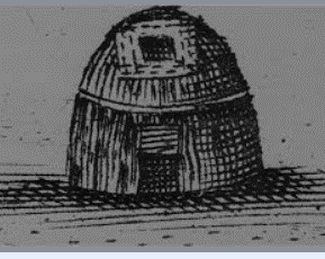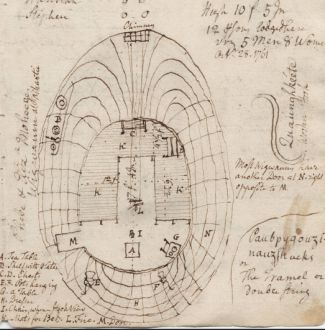Trails and Tales - Meet Your Neighbors in the Hebron Elementary School neighborhood
You are invited to meet some of the people and explore places from Hebron’s past along the southern section of Church Street (Route 85). On this tour you will explore Hebron’s Indigenous past and understand how trade with the West Indies, Boston and New York created a unique economy that allowed African Americans living in Hebron center to lead a middling income lifestyle. This child and family friendly QR tour can be done in any order.
Each site is a short walk from here.  Start this tour by walking north toward Hebron Center and St. Peters Church
Start this tour by walking north toward Hebron Center and St. Peters Church
The woods south of St. Peters’ Church
Explore the interconnection of Indigenous People and Colonial settlers.

Long before there were European settlers in the area now called Hebron, there were Indigenous People who used the land. In all probability, the first Indigenous People arrived after the glaciers melted some 10,000 years ago. Hunting animals like caribou, these people moved across a landscape without trees, but supporting grasses, shrubs and animals adapted to the cold. Paleoindian sites are rare in Connecticut, but Burnt Hill just 3 miles north of here has yielded evidence from the late Paleoindian era made from chert that came from the Hudson River Valley over 100 miles to the west. Some 3000 years before the Great Pyramids of Egypt were built, there were Indigenous People hunting on Burnt Hill and the surrounding area. It is not known what they called themselves, but it is known that they traded with other tribes and moved seasonally from place to place.
Around 6000 years ago, climate change allowed for forests to cover much of Connecticut. Indigenous People managed these forests by burning the low growth that would hinder hunting each year. This is how Burnt Hill in the northern part of Hebron got its name. Planting corn began around 1000 years ago.
A community grinding stone (quern) was located until recently close to an Indigenous settlement on land that would eventually become Hebron Center. Another community quern is located along the Nature Trail at Hebron Elementary School close to the Jeremy River.

Courtesy of Yale University Beinecke Rare Book and Manuscript Library
Indigenous People did not vanish with English settlement, but adapted. By the time Hebron was settled in the early 1700’s, Hebron was associated with the Western Nehantics, Wagunks, and Mohegans. A 1761 illustration by Ezra Stiles, President of Yale College, illustrates how Indigenous culture was changed by English settlement.
Currently, the last reference to Indigenous People passing through Hebron dates from the mid 1800’s
Think about it
Humans are the only animals who have mastered the use of fire as a tool.
Does this make humans an invasive species?
How do we use fire today?
Where to go next
Walk back on the sidewalk towards St. Peters’ Parsonage at 60 Church Street





